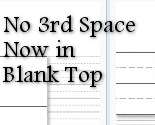Grade Weight
Applying weight to grades simply means that some of the work that your child does will count more than some of his other work. The reason behind weighing grades is that some work should count more because of its difficulty or its importance.
I could say that, generally, older children's grades are weighed, and this might be mostly true, or it might not be true. In our case, I started adding weight to grades in the subjects of math and science in the 6th or 7th grades. In the high school years, I weighed grades in all subjects in some form that applied to the circumstance.
Grade Weight in Parts of an Assignment or a Test
Tests
Whether the homeschool teacher makes the test or the test is from the curriculum - Usually answers that are thought out and written such as definitions, full sentence answers, and essays should always have more value than multiple-choice. The written answers take more effort and skills and they require a more distinct knowledge on the subject. Multiple-choice answers are too easy to have the same value as the written answers.
If your prepackaged curriculum uses weights or assigns a number to each section, be sure to count it as it is in the book unless it seems outrageously off (it happens). Below is a rough example of how to count the answers and obtain a score.
| Each questions is worth | How many questions | How many correct? | # correct x points | Each counts as 1 point | 10 multiple choice questions | Missed 0, 10 correct | 10 x 1 = 10 points |
| Each counts as 4 points | 10 definitions | Missed 1, 9 correct | 9 x 4 = 36 points |
| Each counts as 6 points | 5 questions requiring lengthy answers | missed 2, 3 correct | 3 x 6 = 18 points |
| Total possible points: 80 (80 points = 100%) | Points earned: 64 | ||
In the example above, the student earned 64 points out of 80. To get his test score, divide 64/80. The answer is 0.8. If that answer seems odd to you, think of it as a percentage. To see the test score in a common form, mentally multiple the answer by 100 and the answer is 80 or 80%.
If the test above had no weight applied to any of parts, then the test score would have been 88%. Eighty-eight seems like a better score, but the 88% does not necessarily reflect the student's knowledge and skills as well as the weighted score of 80%.
Weighing Parts of an Assignment
This would be done in the same manner as described above.
Overall Grade Weight
This is a broader level of measuring achievement. In our case, overall grade weight meant that certain parts of a class had more value than other parts. An example of that is making the tests and quizzes and any special work for a class more valuable than the daily work. There might be times that daily work is not counted toward the grade at all. If you decide to use Dr. Wile's science curriculum, you will become familiar with overall grade weight and not counting daily work. I have an example of how to do that on my General Science web page. I will add it here. If you want to read this in context, the general science page is here: Exploring Creation With General Science: The Lab Book
This is an example using the scores from science lab/lab book and tests for the entire grade. The lab grades are worth 35% and the tests are worth 65% of the final grade.
How to Weigh the Grades for Dr. Wile's Science Books
from: Exploring Creation With General Science: The Lab Book
For the sake of this example, let's say that the child earned an average grade of "B-" on his lab reports for a module. Converted to a number score that might be an 82. Let's say the child scored an 85 on the test.
Ok, for one module we have an average score of 82 for the Lab Reports and a module test score of 85.
Steps:- First apply the percentage weights:
- Labs 35% times grade 82 = 28.7
- Test 65% times grade 85 = 55.25
- Add them: 55.25 + 28.7 = 83.95
- Round off to 84, a "B" according to Dr. Wile's suggested grade scale.
Donna Young
March 18, 2008
Related
- MS Excel Grades and Attendance
- Report Card and Grade Forms
- Lab WU A Lab grader
- 12-16 Lab WU A flexible grade keeper, includes Lab WU
Hello Visitor!
I am currently working on this website to add to its ginormousness. Thank you for visiting, and please subscribe yearly to access my many printable files! Donna Young
May 13, 2021


 XLS Composition Grader
XLS Composition Grader
 Printable gift tags,
Printable gift tags,


